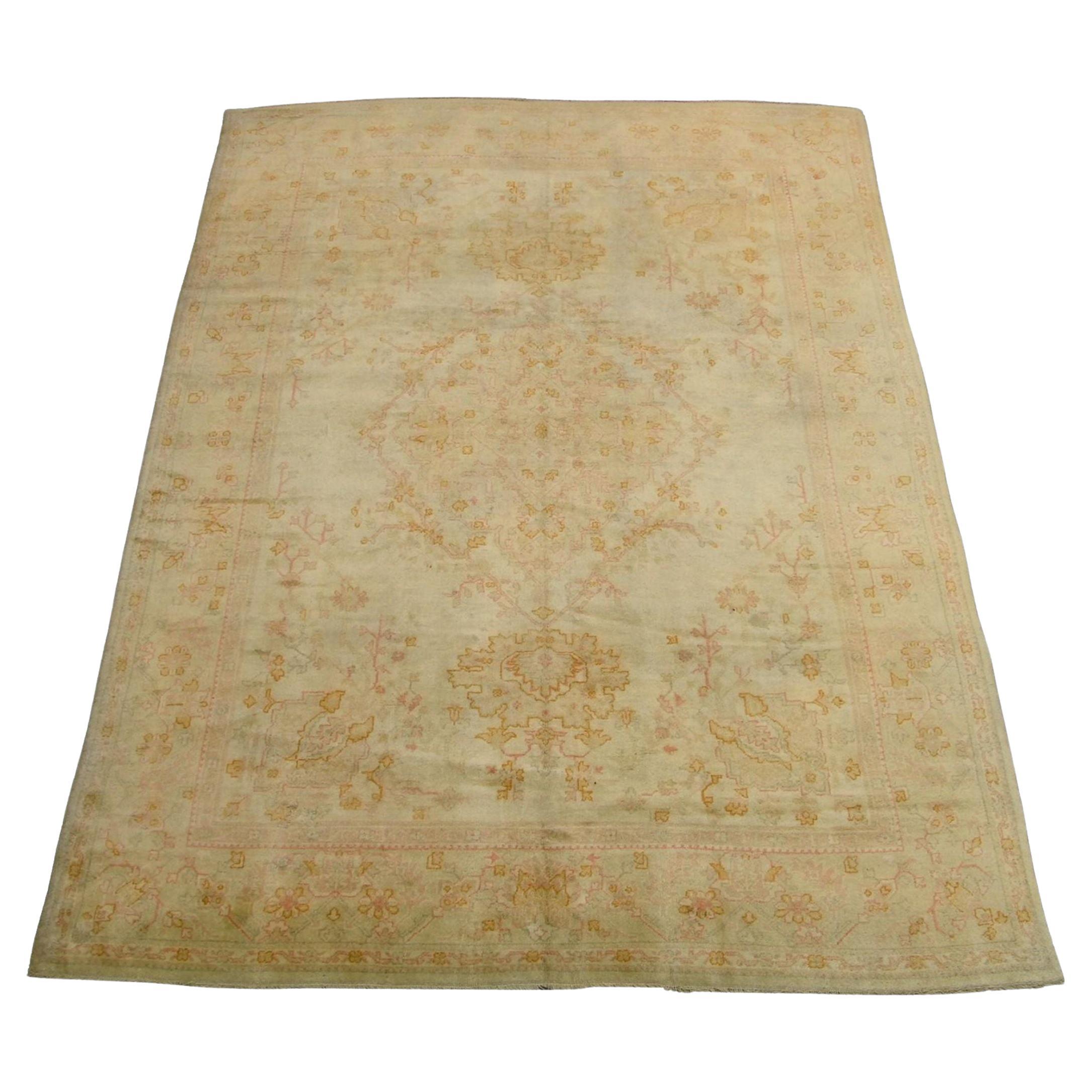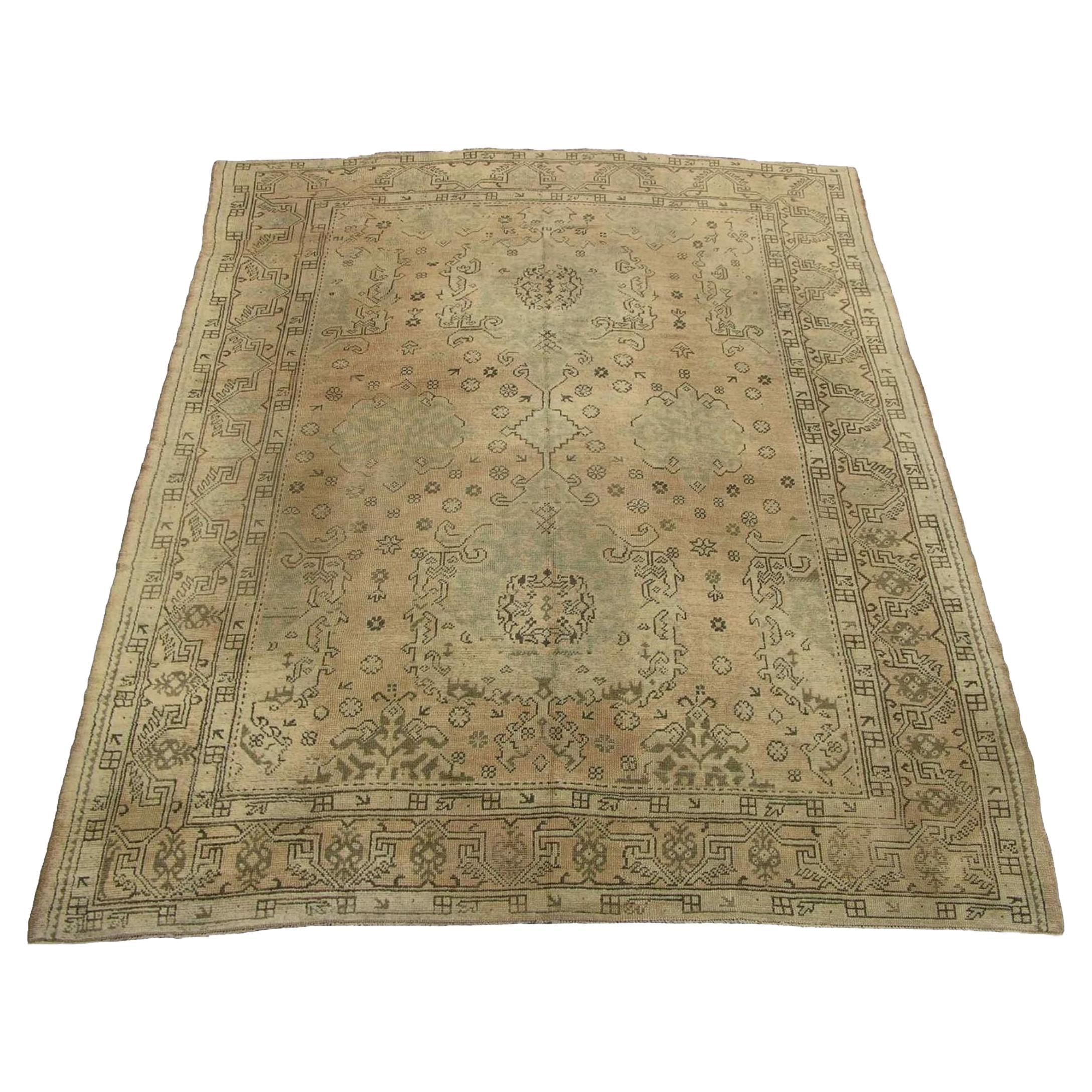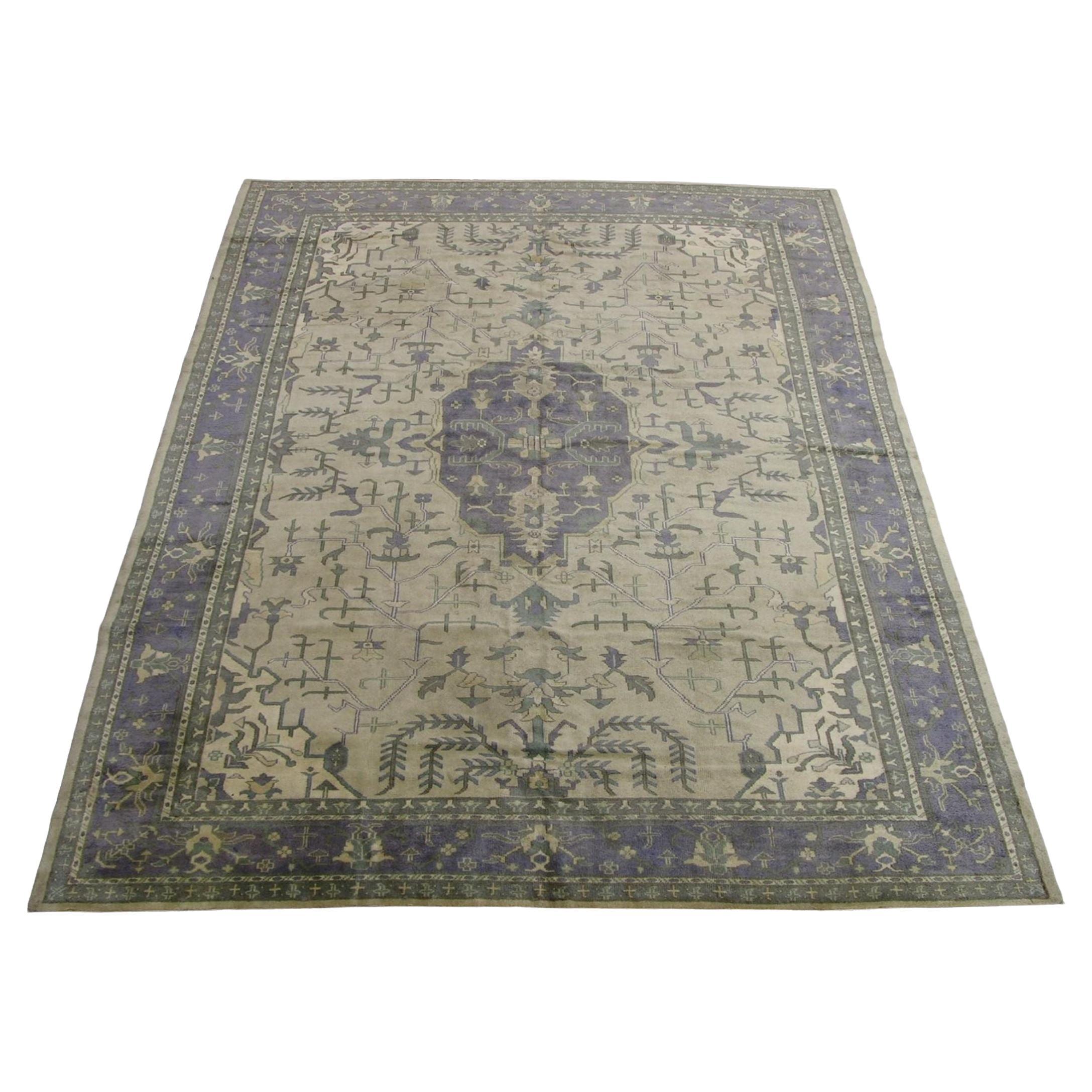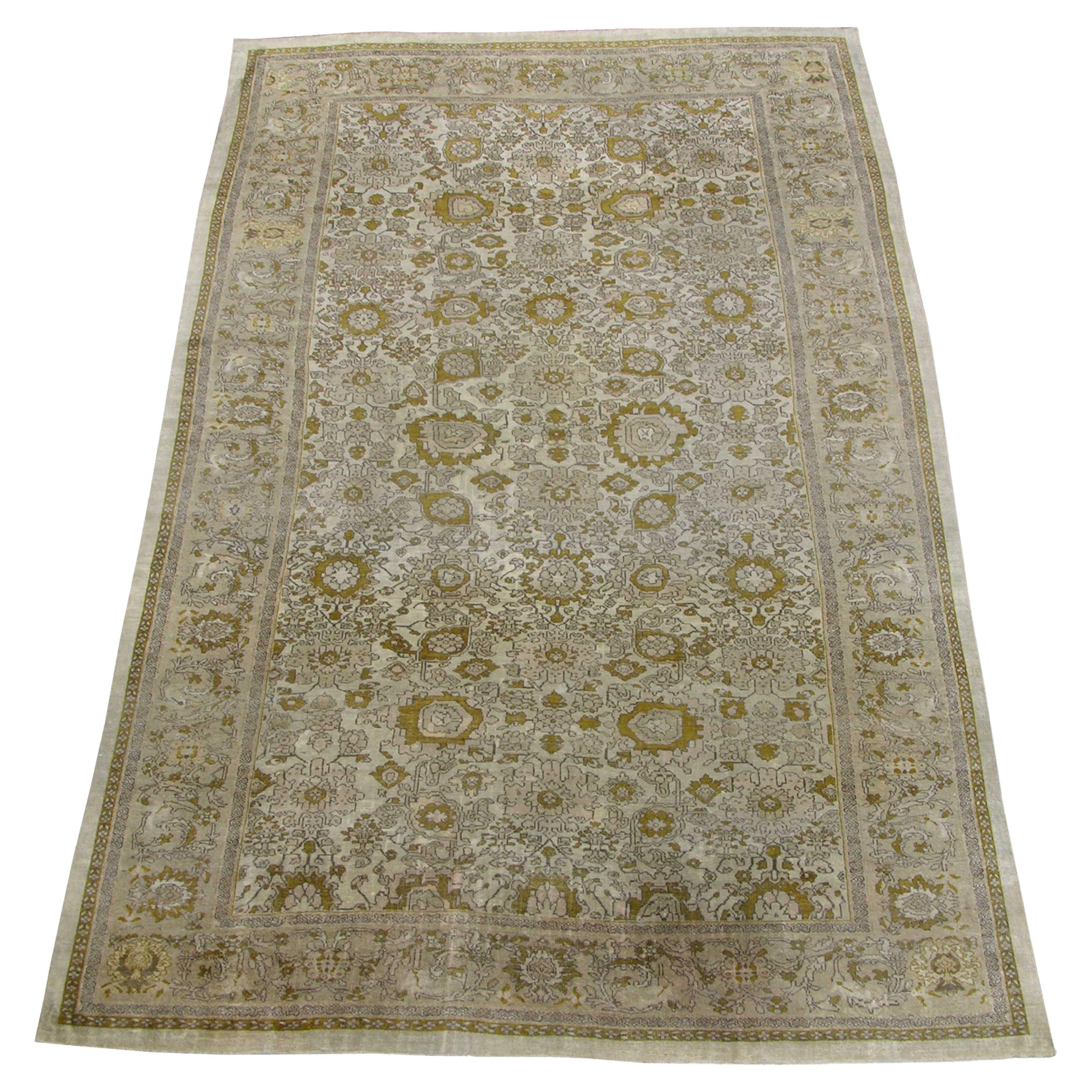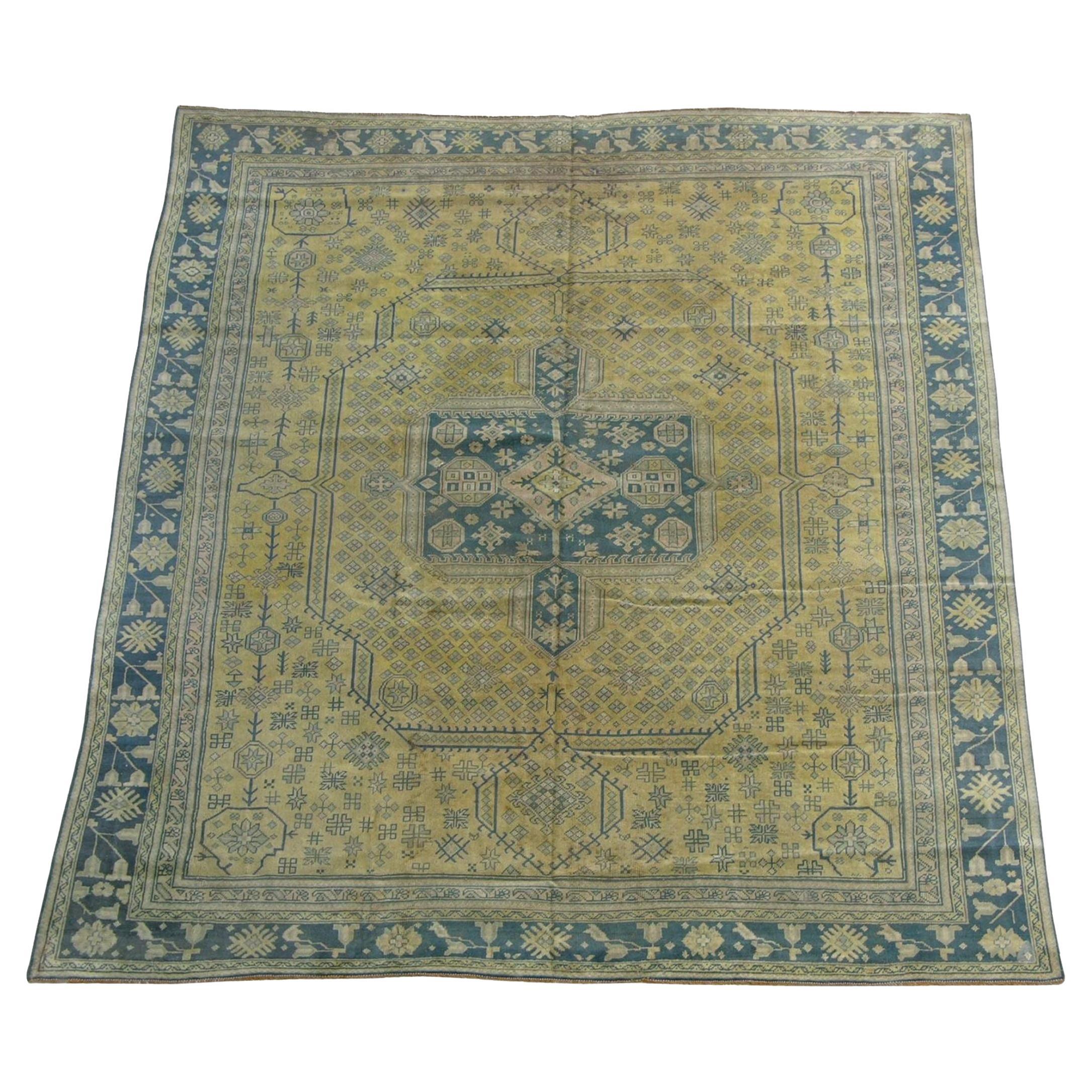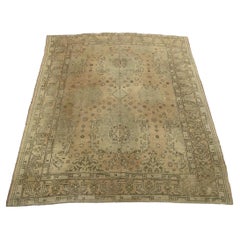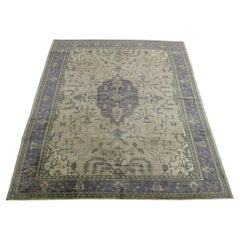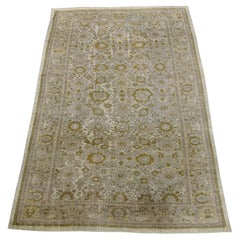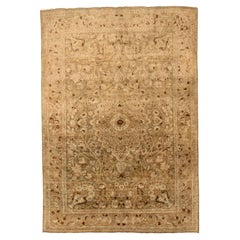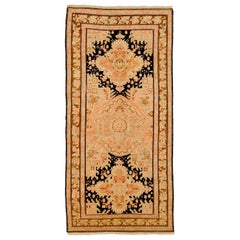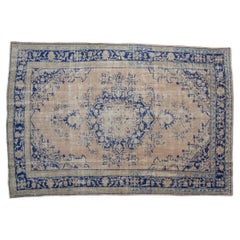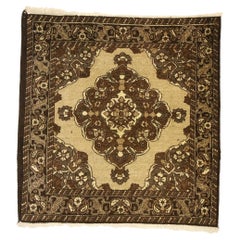Items Similar to Antique Farahan Rug 2.10x2.3
Want more images or videos?
Request additional images or videos from the seller
1 of 5
Antique Farahan Rug 2.10x2.3
$2,100
£1,622.61
€1,875.90
CA$2,967.45
A$3,328.19
CHF 1,742.92
MX$40,440.81
NOK 22,132.22
SEK 20,982.90
DKK 14,002.58
About the Item
Persian Farahan Sarouk rugs were woven in the village of Sarouk but these carpets given the name “Farahan” as a distinction for their exceptional type of Sarouks. The Persian Farahan Sarouk rugs were made over a period of one hundred years beginning in the mid 18th century.
They have an asymmetrical knot on a cotton ground; the wefts are dyed blue or occasionally pinkish red. The weave is extremely fine and the many patterns combine both tribal and more traditional designs. They often have a floral border with a soft pale apple or pistachio green ground.
Feraghans were made between the 1870’s and 1913 from a region north of the town of Arak, produced for the Persian aristocracy. They are single weft, long and narrow or room-sized carpets, typically with an allover herati design or floral and curling leaf motifs.
Sarouk Feraghan carpets exhibit rich colors, often a red field, deep indigo accents and subtle shades of green. Feraghan rugs are of a finer weave than other types of Sultanabad rugs, with delicately executed motifs.
Feraghan Sarouk rugs, also called Persian Sarouk, are double weft, heavier carpets with a higher knot count than village Sultanabad rugs. Fields are often blue or ivory and designs typically feature either large medallions or representations of trees and birds.
They were developed in response to Tabriz merchants who were exporting carpets to the West. Designs were supplied to the weavers in the Sultanabad region who had difficulty executing the fine patterns; thus, these carpets tend to be a bit unbalanced and off-kilter.
The Sarouk Feraghans / Feraghan rugs waned in popularity as the American Sarouk gained prominence. American Sarouk rugs were designed to appeal to the American consumer. Colors, typically burgundy or rose-colored but also blue, were chosen to be compatible with wooden furniture. The motifs are all-over designs of sprays of flowers, vines and leaves more sparsely woven in the field than a traditional Persian Rug.
Dyes did not hold up to alkaline washings during manufacture, so the red backgrounds were painted to intensify the color. Today, the area continues to produce good quality, vegetable dye antique rugs in the tradition of Sarouks and Feraghans woven in the region throughout the last two hundred years.
About the Seller
5.0
Platinum Seller
Premium sellers with a 4.7+ rating and 24-hour response times
Established in 1920
1stDibs seller since 2023
63 sales on 1stDibs
Typical response time: <1 hour
- ShippingRetrieving quote...Shipping from: Los Angeles, US
- Return Policy
Authenticity Guarantee
In the unlikely event there’s an issue with an item’s authenticity, contact us within 1 year for a full refund. DetailsMoney-Back Guarantee
If your item is not as described, is damaged in transit, or does not arrive, contact us within 7 days for a full refund. Details24-Hour Cancellation
You have a 24-hour grace period in which to reconsider your purchase, with no questions asked.Vetted Professional Sellers
Our world-class sellers must adhere to strict standards for service and quality, maintaining the integrity of our listings.Price-Match Guarantee
If you find that a seller listed the same item for a lower price elsewhere, we’ll match it.Trusted Global Delivery
Our best-in-class carrier network provides specialized shipping options worldwide, including custom delivery.More From This Seller
View AllAntique Oushak Rug 13.0x9.3
Located in Los Angeles, US
Antique Turkish Oushak rugs have been woven in Western Turkey since the beginning of the Ottoman period. Historians attributed to them many of the great masterpieces of early Turkish...
Category
Antique Early 1900s Other Russian and Scandinavian Rugs
Materials
Wool, Cotton
Antique Oushak Rug 12.7x10.2
Located in Los Angeles, US
Antique Turkish Oushak rugs have been woven in Western Turkey since the beginning of the Ottoman period. Historians attributed to them many of the great masterpieces of early Turkish...
Category
Antique Early 1900s Other Russian and Scandinavian Rugs
Materials
Wool
Antique Oushak Rug 11.2x9.2
Located in Los Angeles, US
Antique Turkish Oushak rugs have been woven in Western Turkey since the beginning of the Ottoman period. Historians attributed to them many of the great masterpieces of early Turkish...
Category
Antique Early 1900s Other Russian and Scandinavian Rugs
Materials
Wool, Cotton
Early 20th Century Antique Sultanbad Rug
Located in Los Angeles, US
Antique Sultanabad Rugs The city of Sultanabad (which is now known as Arak) was founded, in the early 1800’s, as a center for commercial rug production in Iran. During the late 19th ...
Category
Antique Early 1900s Other Persian Rugs
Materials
Wool, Cotton
Antique Ghiordes Rug 6.3x4
Located in Los Angeles, US
Antique Indian Rugs – Not all the rugs that were woven in India are easy to categorize. That is why we created this antique Indian rugs section. Here you will find Indian rugs of whi...
Category
Antique Early 1900s Other Russian and Scandinavian Rugs
Materials
Wool, Cotton
Antique Oushak Rug 10.8x9.2
Located in Los Angeles, US
Antique Turkish Oushak rugs have been woven in Western Turkey since the beginning of the Ottoman period. Historians attributed to them many of the great masterpieces of early Turkish...
Category
Antique Early 1900s Other Russian and Scandinavian Rugs
Materials
Wool, Cotton
You May Also Like
Antique Persian Area Rug Zanjan Design
Located in Dallas, TX
Antique Persian area rug handwoven from the finest sheep’s wool. It’s colored with all-natural vegetable dyes that are safe for humans and pets. It’s a traditional Zanjan design hand...
Category
20th Century Persian Other Persian Rugs
Materials
Wool
$4,320 Sale Price
20% Off
Antique Russian Area Rug Karebagh Design
Located in Dallas, TX
Antique Russian area rug handwoven from the finest sheep’s wool. It’s colored with all-natural vegetable dyes that are safe for humans and pet...
Category
20th Century Russian Other Russian and Scandinavian Rugs
Materials
Wool
$5,520 Sale Price
20% Off
Vintage Distressed Oushak Carpet
Located in Katonah, NY
:: Center medallion adorned by trefoil finials and stemmed blossoms. Corner spandrel overlays in stepped contour with minor germinating plants. Great abrashes across! Colors and shad...
Category
Vintage 1960s Turkish Oushak Turkish Rugs
Materials
Wool, Cotton
Vintage Persian Khorassan Rug
Located in Dallas, TX
75162 Vintage Persian Khorassan Rug, 02'02 x 02'03. This exquisite hand-knotted wool vintage Persian Khorasan rug captivates with its intricate design and harmonious blend of earth-t...
Category
Mid-20th Century Persian Khorassan Persian Rugs
Materials
Wool
$447 Sale Price
20% Off
Early 20th Century Turkish Oushak Accent Rug
Located in New York, NY
An antique Turkish Oushak accent rug. Definitely in the 1920’s Mahal style, with a central palmette axis and rounded arabesques and more palmettes and curving leaves, this Oushak has...
Category
Early 20th Century Turkish Oushak Turkish Rugs
Materials
Wool
Antique Caucasian Area Rug, Early 20th Century
Located in Savannah, GA
Antique Caucasian Area Rug, Early 20th Century
Category
Early 20th Century Persian Persian Rugs
Materials
Wool
More Ways To Browse
Tabriz Rug With Birds
Feraghan Carpet
Sarouk Feraghan
Farahan Sarouk Tabriz
Painted Sarouk Carpet
Solid Wood Side Table Stool
1959 Wood Couch
Dutch Mid Century Chair
Rare Stone Table
Used Chair And A Half
Wood Folding Chair
Antique Green Side Table
Antique Red Velvet
Antique Wall Bracket
Midcentury Rosewood Dining Table
Pedestal Mahogany Dining Table
Vintage 1940s Sofas
1970s Kitchen Table
